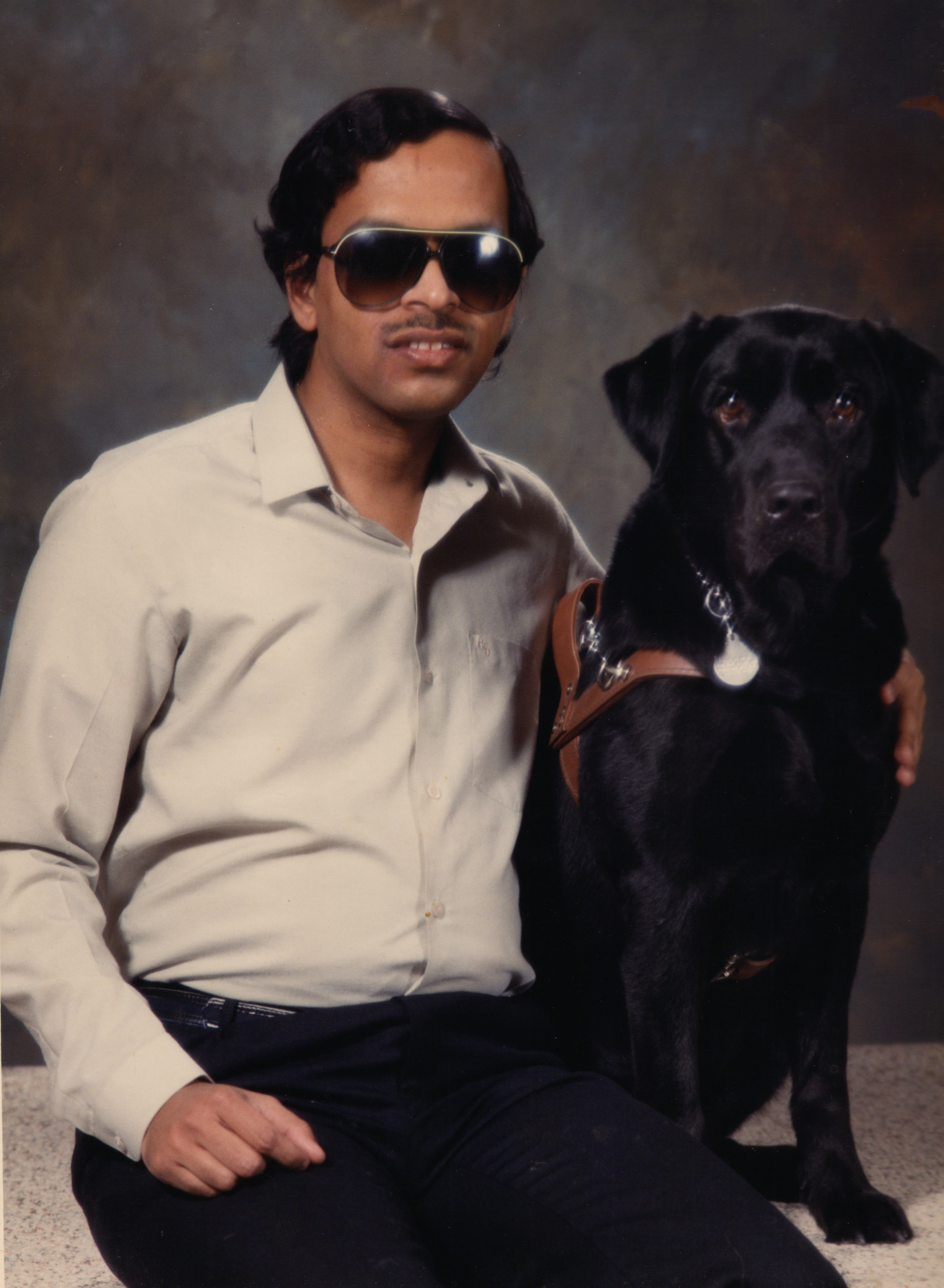In Praise Of Guide Dogs
| On The Internet | ||
| No one knows you're not a dog! | Nor if you're the same dog! | Or even the same gender! |

(2/15/1987—12/05/1999) |

(12/21/1997—4/11/2011) |

(8/4/2009—9/3/2022) |
1. A Tale Of Three Guide-Dogs
This is a composite story of three guide-dogs — Aster, Hubbell and Tilden Labrador and my journey with them over a span of 32 years. See the links in the reference section of this article for their respective web-sites. There, you can read about each of them in detail including all the various places where they visited and worked. The Hubbell Diary and Tilden Diary each contain a day-by-day log of what we did during training at Guiding Eyes.
All three of them graduated from Guiding Eyes in New York — a professionally run non-profit organization that trains guide-dogs for the blind.
2. What A Guide-Dog Does
the dog guides by walking on your left and wears a guide-dog harness. The harness has a handle you hold, and is buckled around the dog's midriff, with an extra strap that goes around the front of the dog's chest. This design allows the handler to feel every one of the dog's moves — you can feel the dog pull right or left etc.; and as you get used to it, you can even tell which way the dog is looking from the pose of the dog's head. This means you get very precise signals from the dog at each step.
Here is an over-simplified list of things a guide-dog is trained to do:
- Avoid obstacles — Pull left or right so you avoid obstacles in your way.
- Stop at all changes of elevation — so the dog comes to a stop at an up or down curb, at a step etc.
- Take hand-signals (augmented with voice commands if needed) such as turn left or turn right.
- A more emphatic version of the above to make an immediate turn — lacking that, the dog would take the next available turn.
- Crossing streets by navigating correctly to the opposite curb. Note that contrary to most people's assumptions, a guide-dog does not decide when to cross — that decision is made by the owner based on traffic sounds. Dogs cannot read traffic lights because they dont see color the way we do — dogs can only see red for color. Note that as an exception, guide-dog schools do train dogs to handle traffic-lights if the dog is being given to someone who is both deaf and blind — but those dogs are extra special.
Sounds simple? It is — except that there is a lot more that goes on within the communication between the dog and the owner which is what makes the whole experience magical.
3. Why A Dog Works For You
Having summarized the what, it is useful to understand why guide-dogs in particular and working dogs in general do what they do. The dog is a pack animal, and typically thinks of his/her owner as the leader of the pack. During training, you are not just teaching the dog, you're forming a life-long bond with the dog — so at the end of the day, the dog works not because they must but because they want to work for you. Simply put, once you develop a strong bond with your dog, that dog will do anything for you!
4. Getting The Most From Your Dog
Everything that has been said about guide-dogs is also true of every pet dog. So here are some tips that will help you have a truly fulfilling relationship with your own dog:
- Consistency wins: Be consistent in your interaction with your dog – both when praising the dog, or when gently correcting the dog if needed. Dogs thrive on consistency because that means they dont need to second-guess what you want, and given that the dog's sole aim is to please you, consistency wins.
- Use short simple words of command. Dogs will typically tune out long sentences as a bunch of noise, on the other hand, a short crisp word will always catch their attention out of all the noise around. Used consistently, your dog will also respond consistently.
- Stay firm but gentle. Do not continuously repeat your command to your dog, your dog will tune those out as noise. Stay firm, use the command once, and make sure you get the response you want; then reinforce the desired behavior with profuse praise.